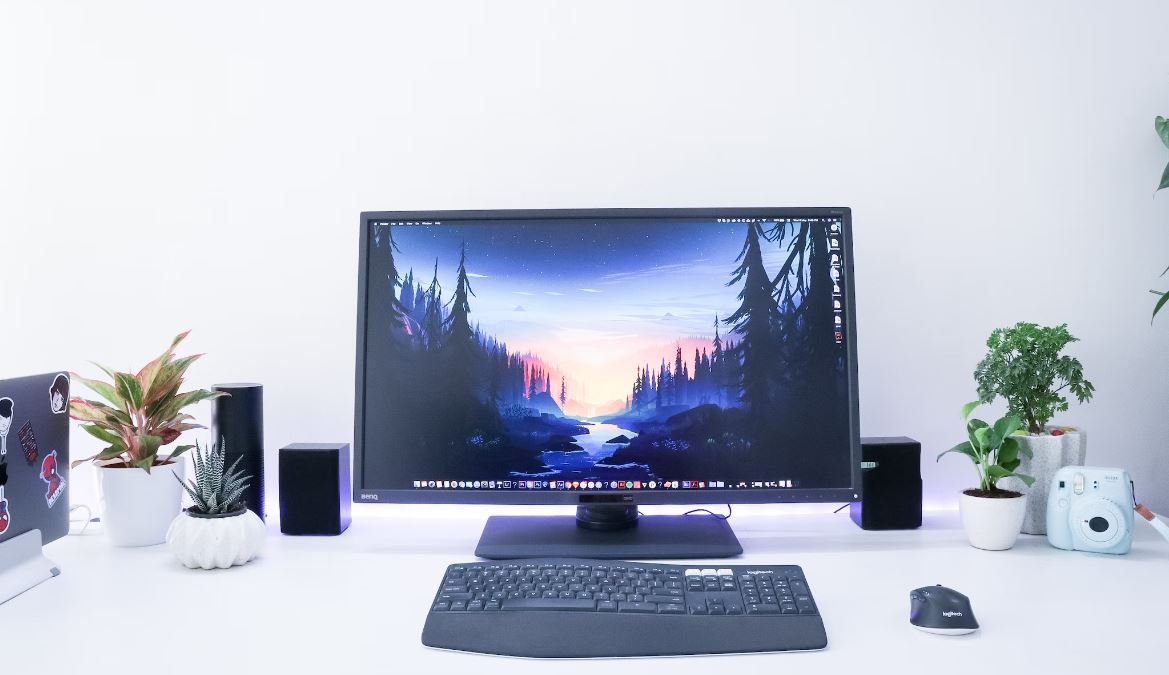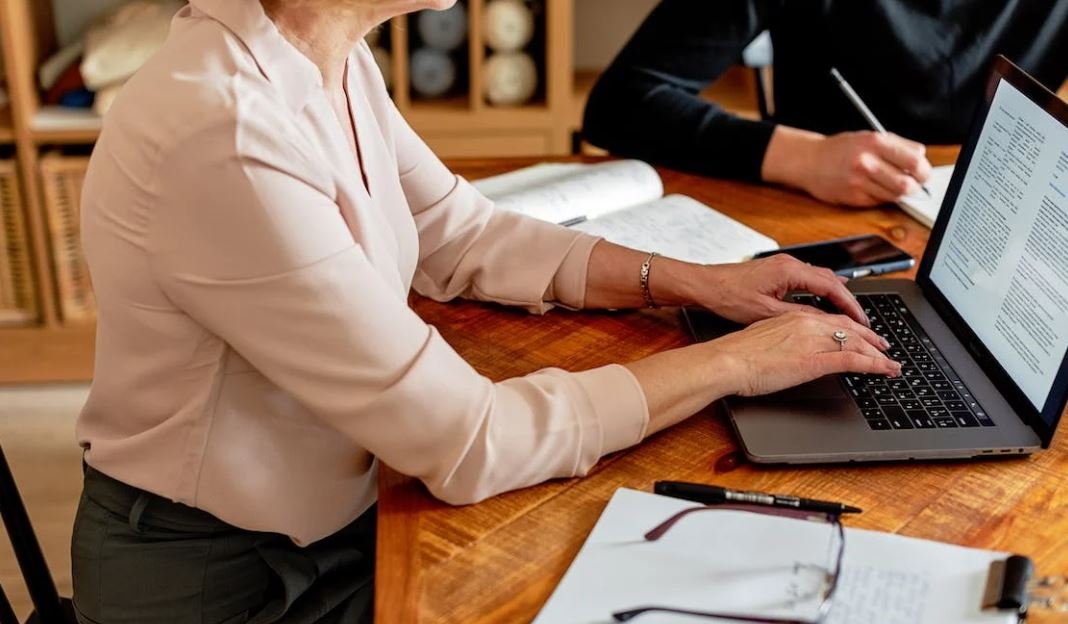What Is Voiceover Narration?
Voiceover narration is a technique used in various media productions where a narrator’s voice is heard speaking over scenes or visuals. It is commonly used in films, television shows, commercials, documentaries, and even video games. Voiceover narration plays a crucial role in conveying information, setting the tone, and enhancing the overall viewing experience.
Key Takeaways:
- Voiceover narration is a technique used in various media productions.
- It involves a narrator’s voice speaking over scenes or visuals.
- Voiceover narration is commonly used in films, TV shows, commercials, documentaries, and video games.
- It plays a crucial role in conveying information and setting the tone.
- Voiceover narration enhances the overall viewing experience.
**Voiceover narration provides an auditory explanation or commentary that complements the on-screen action.** The narrator’s voice can provide context, explain complex concepts, share character thoughts, express emotion, introduce new scenes or characters, and deliver crucial information that may not be apparent from the visuals alone. This technique can help engage the audience and guide their understanding of the story.
**Voiceover narration can adopt different styles and tones**, depending on the nature of the project and the desired effect. It can be formal or conversational, objective or subjective, dramatic or comedic. The tone and style chosen can greatly influence how the audience perceives the content. A serious documentary may require a authoritative voice, while an animated film may benefit from a more playful and energetic narration.
Here are a few examples of where voiceover narration is commonly used:
- Films: Voiceover narration in films can provide insights into a character’s thoughts or inner workings, introduce the story, or offer historical context.
- TV Shows: Voiceovers in TV shows can provide a narrative structure, offer unique perspectives, or provide commentary on the events unfolding on screen.
- Commercials: Voiceover narration in commercials is often used to convey persuasive messages or provide information about a product or service.
- Documentaries: Voiceovers in documentaries are commonly used to guide the viewer through the subject matter, provide context, or share the filmmaker’s perspective.
- Video Games: Voiceover narration in video games can enhance storytelling, provide instructions or cues, and bring characters to life.
Voiceover Narration Styles
When it comes to voiceover narration, different styles can be employed. Some common styles include:
- **Conversational:** This style is characterized by a casual, natural tone, as if the narrator is speaking directly to the audience in a relaxed manner.
- **Formal:** A formal style is often used in documentaries or educational videos. The narrator delivers information in a precise, authoritative manner.
- **Dramatic:** A dramatic style aims to evoke strong emotions. The narrator may use varying tones, emphasis, and pacing to create an intense or captivating atmosphere.
- **Comedic:** This style involves playful and humorous narration, often with quick timing and witty remarks, adding comedy to the visuals or script.
Benefits of Voiceover Narration
Voiceover narration offers several benefits in media productions:
- **Clarity:** Voiceovers help clarify complex concepts or provide additional information that the visuals alone may not convey.
- **Engagement:** A well-executed voiceover can captivate the audience and enhance their emotional connection to the content.
- **Versatility:** Voiceover narration can be used in various genres and formats, from documentaries to commercials, providing flexibility in storytelling.
- **Accessibility:** Voiceovers also make the content accessible to visually impaired individuals, allowing them to fully engage with the media.
Tables
| Industry | Usage |
|---|---|
| Films | Thoughts, backstory, introductions |
| TV Shows | Narrative structure, commentary |
| Commercials | Persuasive messages, product information |
| Documentaries | Guiding through subject matter, context |
| Video Games | Storytelling, instructions, character portrayal |
| Style | Characteristics |
|---|---|
| Conversational | Casual, natural, relaxed tone |
| Formal | Precise, authoritative delivery |
| Dramatic | Varying tones, emphasis, intense atmosphere |
| Comedic | Playful, humorous, quick timing |
Conclusion
In conclusion, voiceover narration is a powerful technique that enhances the storytelling experience in various media productions. Whether used in films, TV shows, commercials, documentaries, or video games, it provides valuable information, sets the tone, and engages the audience on a deeper level. By utilizing voiceover narration in a skillful and thoughtful manner, content creators can create impactful and memorable experiences for their viewers.

Common Misconceptions
1. Voiceover Narration is Only Used in Films
One of the most common misconceptions about voiceover narration is that it is only used in films. While voiceover narration is indeed used in movies to provide additional information or guide the audience through the story, it is not limited to this medium alone.
- Voiceover narration is also used extensively in documentaries to present factual information or provide context to the visuals.
- Many commercials and advertisements utilize voiceover narration to showcase products or services and create an emotional connection with the audience.
- Moreover, voiceover narration is also used in audio books to bring stories to life and captivate listeners.
2. Voiceover Narrators Do Not Need Acting Skills
Another misconception is that voiceover narrators do not need acting skills. While it may seem like reading a script into a microphone is a simple task, a skilled voiceover narrator goes beyond just reading words.
- Good voiceover narrators use vocal inflections, tone, and pacing to convey emotions and engage the audience.
- They bring characters to life through their voices, often requiring the ability to portray different accents or dialects.
- Voiceover narration also requires the ability to match the tone and style of the project, whether it be dramatic, comedic, or informative.
3. Voiceover Narration is Easy and Requires No Training
Some people believe that voiceover narration is easy and does not require any training. However, this is far from the truth. Voiceover narration is a skill that requires practice, technique, and professional training.
- Training helps voiceover narrators develop proper breathing techniques, vocal control, and diction.
- Learning how to interpret scripts and bring characters to life requires guidance and practice.
- Additionally, becoming familiar with the technical aspects of recording and editing audio is essential for delivering high-quality voiceovers.
4. Voiceover Narrators Just Use Their Natural Voice
It is a common misconception that voiceover narrators only use their natural voice for all types of projects. While some projects may call for a natural voice, voiceover narrators often need to adapt and modify their voices to suit the specific requirements of the project.
- They may need to adopt a different vocal range or pitch to portray a specific character or demographic.
- Voiceover narrators may also need to use different vocal styles or accents to match the desired tone or setting of the project.
- They should be able to switch between various vocal qualities, such as serious, authoritative, conversational, or animated, depending on the content.
5. Anyone Can Be a Voiceover Narrator
Lastly, a common misconception is that anyone can be a voiceover narrator. While it is true that anyone can attempt voiceover narration, being a professional and successful voiceover narrator requires a specific set of skills and qualities.
- A strong and clear voice, capable of captivating and engaging an audience, is essential.
- Good communication skills, the ability to take direction, and a willingness to constantly improve are also important.
- Furthermore, being adaptable, having a good work ethic, and being able to handle rejection are crucial in the competitive voiceover industry.

Types of Voiceover Narration
In the world of voiceover narration, there are various types that serve different purposes. The following table highlights some of the most commonly used types:
| Type | Description | Examples |
|---|---|---|
| Commercial | Voiceovers used in advertisements to promote products or services | TV commercials, radio spots |
| Documentary | Narration accompanying non-fictional audiovisual works | Nature documentaries, historical films |
| E-Learning | Recordings used for educational purposes in online courses or instructional videos | Tutorials, language courses |
| Character | Voice acting to bring animated or fictional characters to life | Video games, cartoons |
| Corporate | Used to convey information or messages within a company or organization | Training videos, corporate presentations |
| Audiobook | Voicing the narration of books or novels in an audio format | Fiction, self-help books |
Major Influences on Voiceover Narration
Various factors can significantly impact the quality and effectiveness of voiceover narration. The table below presents some key influences:
| Influence | Description |
|---|---|
| Voice Quality | The tone, timbre, and clarity of the voice used for narration |
| Script | The written text that guides the narrator’s performance |
| Delivery Speed | The pace at which the narration is spoken |
| Audience | The intended viewers or listeners of the narration |
| Sound Effects | Addition of audio elements to enhance the narration |
| Background Music | Musical accompaniment that complements the narration |
Famous Voiceover Narrators
Throughout history, many talented individuals have left their mark on the world of voiceover narration. The following table showcases some notable figures:
| Name | Famous Works |
|---|---|
| Morgan Freeman | The Shawshank Redemption, March of the Penguins |
| James Earl Jones | Star Wars (as Darth Vader), The Lion King (as Mufasa) |
| David Attenborough | Planet Earth, Blue Planet |
| Don LaFontaine | Movie trailers: “In a world…” |
| Mel Blanc | Voices of numerous Looney Tunes characters |
| Margaret Mitchell | Gone with the Wind (went on record for the audiobook) |
Benefits of Professional Voiceover Narration
When it comes to utilizing voiceover narration, employing professionals can make a substantial difference. The table below outlines some of the advantages:
| Advantage | Description |
|---|---|
| High-Quality Delivery | Professional narrators bring expertise and skills to deliver polished recordings |
| Enhanced Engagement | Experienced narrators capture audience attention and maintain interest throughout |
| Brand Consistency | Professional voiceovers ensure a consistent voice for your brand or project |
| Time and Cost Efficiency | Utilizing professionals saves time and money compared to in-house production |
| Versatility | Expert narrators can adapt their voice to various styles and genres |
| Industry Knowledge | Professionals understand the industry standards and trends for voiceover narration |
The Voiceover Process
Creating a compelling voiceover narration involves a well-defined process. The table below outlines the sequential steps:
| Step | Description |
|---|---|
| Script Development | Writing or adapting a script that suits the narration requirements |
| Preparation | Reviewing the script, understanding the context, and selecting suitable voice talent |
| Recording | Performing the narration in a professional recording studio or at a suitable location |
| Editing | Removing mistakes, optimizing audio quality, and adding sound effects or music if needed |
| Integration | Syncing the voiceover with the accompanying visuals or multimedia components |
| Review and Feedback | Seeking input from relevant stakeholders and incorporating necessary revisions |
| Finalization | Preparing the final version of the narration for distribution or implementation |
Powerful Examples of Voiceover Narration
When done effectively, voiceover narration can have a profound impact on the overall experience. The table below presents some memorable examples:
| Example | Description |
|---|---|
| Opening Monologue of Blade Runner | The atmospheric narration by Harrison Ford sets the gritty tone of the futuristic film |
| Morgan Freeman in The Shawshank Redemption | Freeman’s smooth and captivating voice enhances the emotional depth of the story |
| David Attenborough in Planet Earth | Attenborough’s authoritative voice guides viewers through breathtaking natural wonders |
| Don LaFontaine in Movie Trailers | LaFontaine’s iconic catchphrase “In a world…” became synonymous with the genre |
| The Lion King Opening Scene | James Earl Jones’s powerful narration sets the stage for the epic Disney animated film |
The Future of Voiceover Narration
As technology evolves, voiceover narration continuously adapts to new possibilities and trends. The table below explores potential future advancements:
| Advancement | Description |
|---|---|
| Artificial Intelligence (AI) Narrators | AI-generated voices may become more prevalent in narration, providing better emulation of human intonation and expression |
| Interactive Voiceover | Narration in interactive media, such as video games, that adjusts based on player choices and actions |
| Immersive 3D Audio | Advancements in audio technology may allow for more immersive and 3D sound experiences in narration |
| Neuro-Linguistic Programming | Developments in brain-computer interface technology may enable direct narration from thoughts |
| Real-time Language Translation | Integration of voiceover technology with instantaneous multilingual translation capabilities |
| Voice Cloning | Advancements in vocal synthesis technology may permit accurate cloning of specific voices |
In conclusion, voiceover narration encompasses various types, involves influential factors, showcases esteemed narrators, offers notable benefits, follows a distinct process, exhibits powerful examples, and holds potential for future advancements. Through skillful narration, stories unfold, information is conveyed, and captivating experiences are created.
Frequently Asked Questions
What is voiceover narration?
Voiceover narration is a technique used in film, television, advertising, and other media forms where a voice actor provides a spoken commentary or explanation of a scene or event taking place on screen. It is a technique commonly used to convey information, set the tone or mood, or create a narrative structure.
How is voiceover narration different from on-screen dialogue?
Voiceover narration differs from on-screen dialogue in that it is not performed by an actor physically present in the scene. Instead, the voiceover actor’s voice is recorded separately and added to the scene during post-production. Voiceover narration can provide additional insight or information that is not easily conveyed through on-screen dialogue.
What are some common uses of voiceover narration?
Voiceover narration is commonly used in documentaries to provide information, in commercials to explain product features, in films to narrate a character’s thoughts or backstory, and in audiobooks to bring written text to life. It can also be used in video games, instructional videos, and e-learning courses.
What skills does a voiceover actor need?
A voiceover actor needs strong vocal abilities, including clear diction, proper pronunciation, and the ability to portray different emotions and characters through their voice. They should also have good interpretative skills to understand and convey the intended message of the script. Additionally, a voiceover actor should possess good audio recording and editing skills or have access to professional recording facilities.
How can voiceover narration enhance a project?
Voiceover narration can enhance a project by providing a more immersive experience for the audience. It can guide the viewer’s attention, provide important information or context, and evoke emotional responses. Voiceover narration can also add a professional touch to a project, making it more polished and engaging.
Can anyone become a voiceover narrator?
While anyone can try their hand at voiceover narration, becoming a successful voiceover narrator requires a combination of natural talent, training, practice, and dedication. It is important to invest in improving vocal skills, learn about the industry, and network with professionals. Additionally, having a versatile and distinct voice can increase the chances of success in the competitive voiceover industry.
How much does voiceover narration typically cost?
The cost of voiceover narration can vary depending on several factors, including the length of the project, the experience and reputation of the voiceover actor, the intended usage of the narration, and the scope of the project. Voiceover narration rates can range from a few hundred dollars for a short script to several thousand dollars for longer projects or high-profile work.
What are some tips for writing a voiceover script?
When writing a voiceover script, it is important to keep the language concise, clear, and engaging. Use a conversational tone that matches the intended audience and avoid jargon or overly technical language. It is also beneficial to provide specific instructions or cues for the voiceover actor, such as emphasizing certain words or adopting a particular tone. Reviewing and editing the script multiple times can help refine the content and ensure it aligns with the overall project vision.
What are some challenges faced by voiceover narrators?
Some challenges faced by voiceover narrators include maintaining vocal consistency throughout a recording session, adapting to different script styles and genres, understanding and accurately interpreting the intended message of the script, and delivering lines with suitable timing and emotion. Additionally, the competitive nature of the industry can pose challenges in terms of finding consistent work and standing out among other voiceover actors.
What equipment and software do I need for voiceover narration?
To get started with voiceover narration, you will need a good-quality microphone, headphones, and a quiet space to record. Additionally, you may need a pop filter to reduce plosive sounds, a microphone stand or boom arm, and a soundproofing setup if your recording environment is not already sound-treated. Software-wise, you will need audio recording/editing software such as Audacity, Adobe Audition, or Pro Tools to record, edit, and enhance your voiceover recordings.




